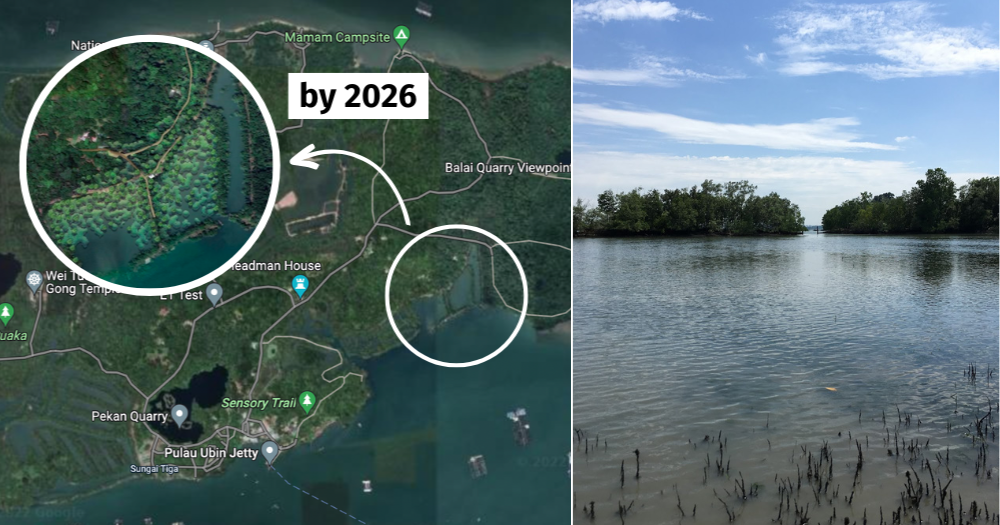Follow us on Telegram for the latest updates: https://t.me/mothershipsg
By 2026, the site of disused aquaculture ponds on Pulau Ubin will breathe new life as a mangrove habitat is restored.
Plans for the OCBC Mangrove Park, which will see around 8,000 mangrove trees restored at Sungei Durian on Pulau Ubin, were announced by the National Parks Board (NParks) and OCBC Bank (OCBC) on Oct. 29.
Along with that, OCBC will also work with staff volunteers and community group Friends of Ubin Network to plant another 1,000 mangrove saplings along the Ubin coastline over the next six years.
In total, the 9,000 mangrove trees will have the potential to sequester up to 30 million kg of carbon dioxide, NParks and OCBC shared in a press release.
OCBC is donating S$3 million to fund the project.
Mangroves cleared in the past
Sungei Durian is a four-hectare site located along the southern coast of the Pulau Ubin.
According to NParks and OCBC, it used to be filled with mangroves, but the trees were cleared and converted into aquaculture ponds in the 1990s.
The ponds were eventually abandoned in 2001.
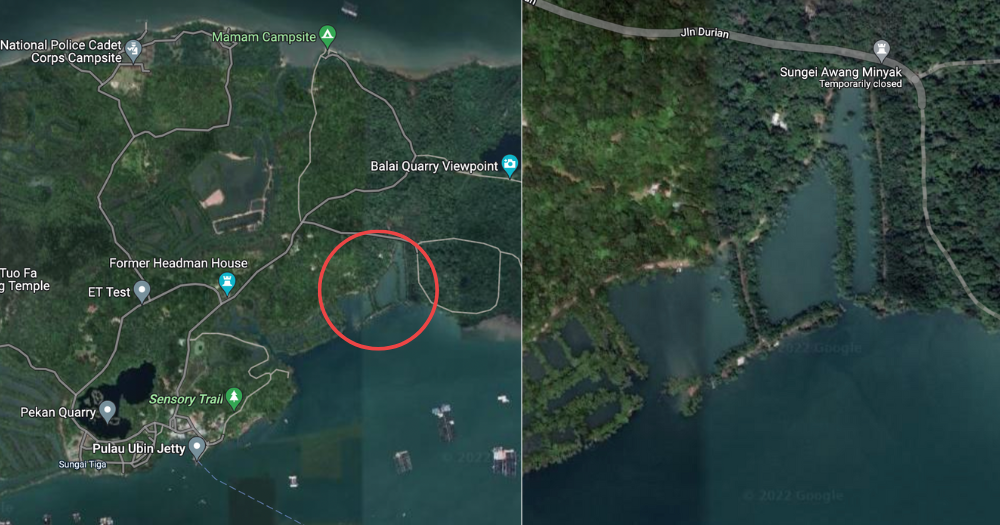 Sungei Durian site along the southern coast of Pulau Ubin.
Sungei Durian site along the southern coast of Pulau Ubin.
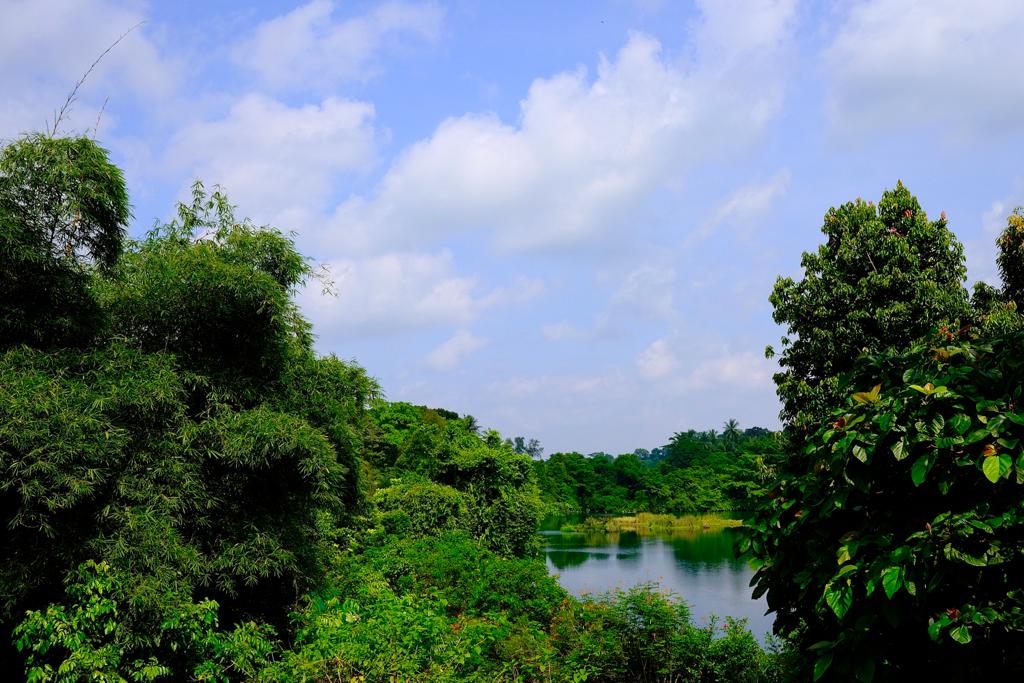 Image via NParks/Facebook.
Image via NParks/Facebook.
Restoration method adopted for the first time
The restoration project at the Sungei Durian site is adopting the "Ecological Mangrove Restoration" (EMR) method.
The EMR method focuses on identifying and replicating the right environmental conditions for mangroves to establish at a site.
If mangrove propagules can disperse in an area naturally, it reduces the need for manual planting.
The restoration efforts started in 2014 when the Restore Ubin Mangroves (RUM) project was proposed. The RUM project is a ground-up initiative that includes nature enthusiasts, researchers and villagers at Ubin.
Researchers, such as those from the Mangrove Lab at the National University of Singapore, have identified existing mangrove species and mapped the ground conditions at Sungei Durian as part of the EMR method.
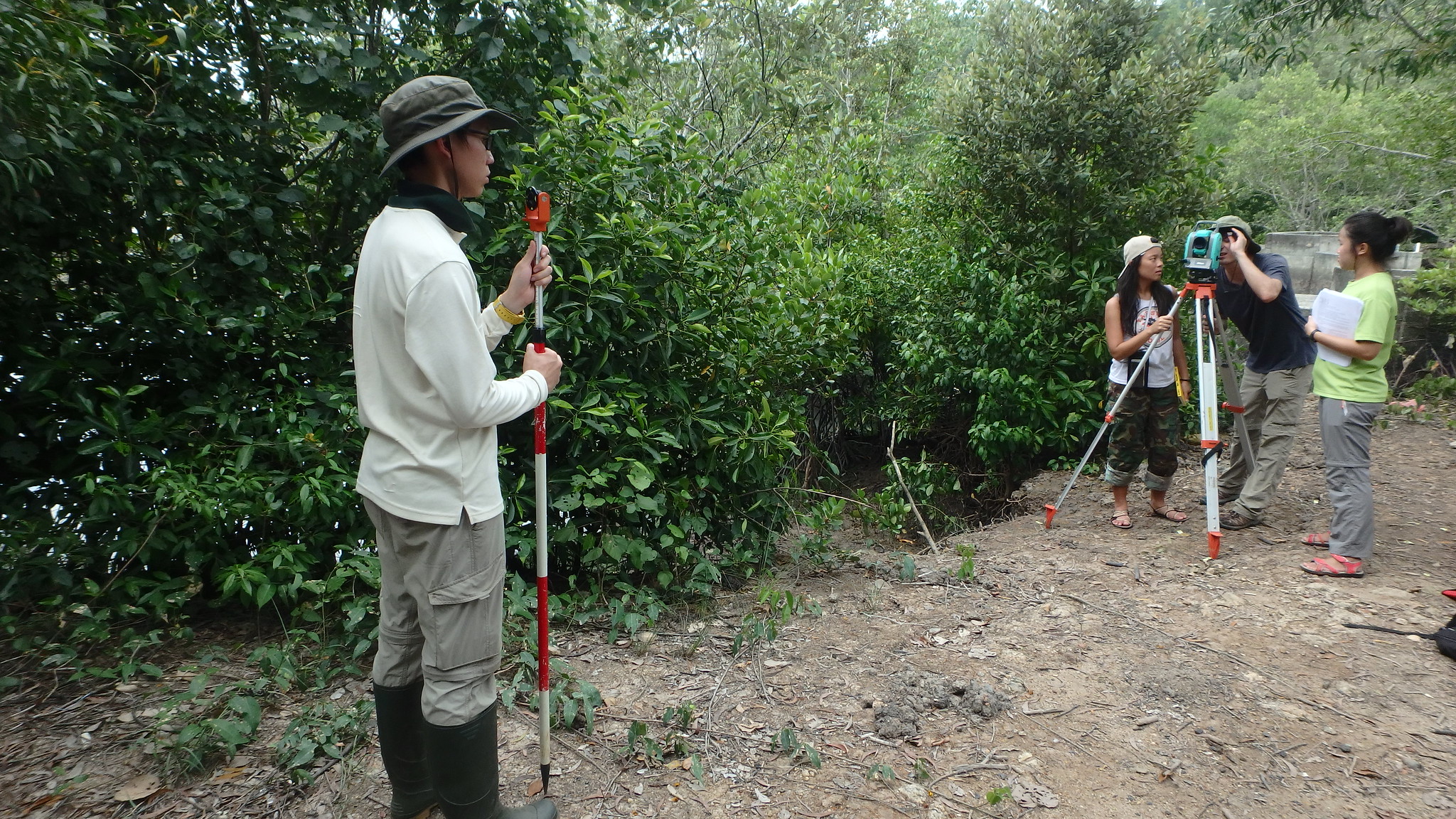 Photo by Ria Tan via RUM initiative website.
Photo by Ria Tan via RUM initiative website.
Nature enthusiasts also conducted educational walks and clean-ups at Sungei Durian in the past.
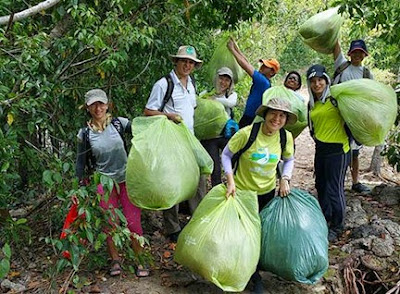 Photo by Lisa Lim via RUM initiative website.
Photo by Lisa Lim via RUM initiative website.
Daniel Friess, an associate professor who leads the lab, told Mothership:
"It’s great that an idea first floated in 2014 is now moving ahead. The Sungei Durian project is a great example of how different stakeholders, from government, to the corporate sector, to the community, can come together and work towards a great conservation outcome."
What to expect
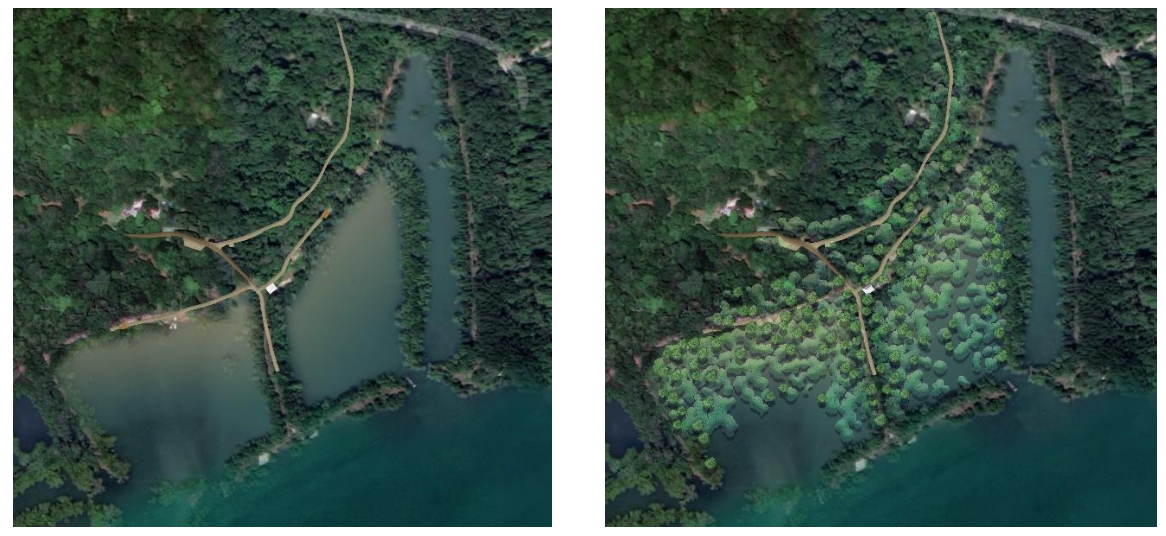 Left: Sungei Durian now. Right: Sungei Durian in 10 years. Image via NParks.
Left: Sungei Durian now. Right: Sungei Durian in 10 years. Image via NParks.
The pond beds at Sungei Durian will be earth-filled "to increase the elevation levels of the base of the ponds", drain culverts will be added to increase water and sediment flow, and gabion blocks will be erected to increase water and sediment flow.
The additional 1,000 mangrove saplings will be planted at various sites like Sungei Puaka and Sungei Jelutong.
The saplings will belong to native mangrove tree species, consisting of:
- Api-api Bulu (Avicennia rumphiana)
- Bakau Minyak (Rhizophora apiculata)
- Black Mangrove (Bruguiera sexangula)
- Pakau Butih (Bruguiera cylindrica)
- Tumu Merah (Bruguiera gymnorhiza)
- White Teruntum (Lumnitzera racemosa)
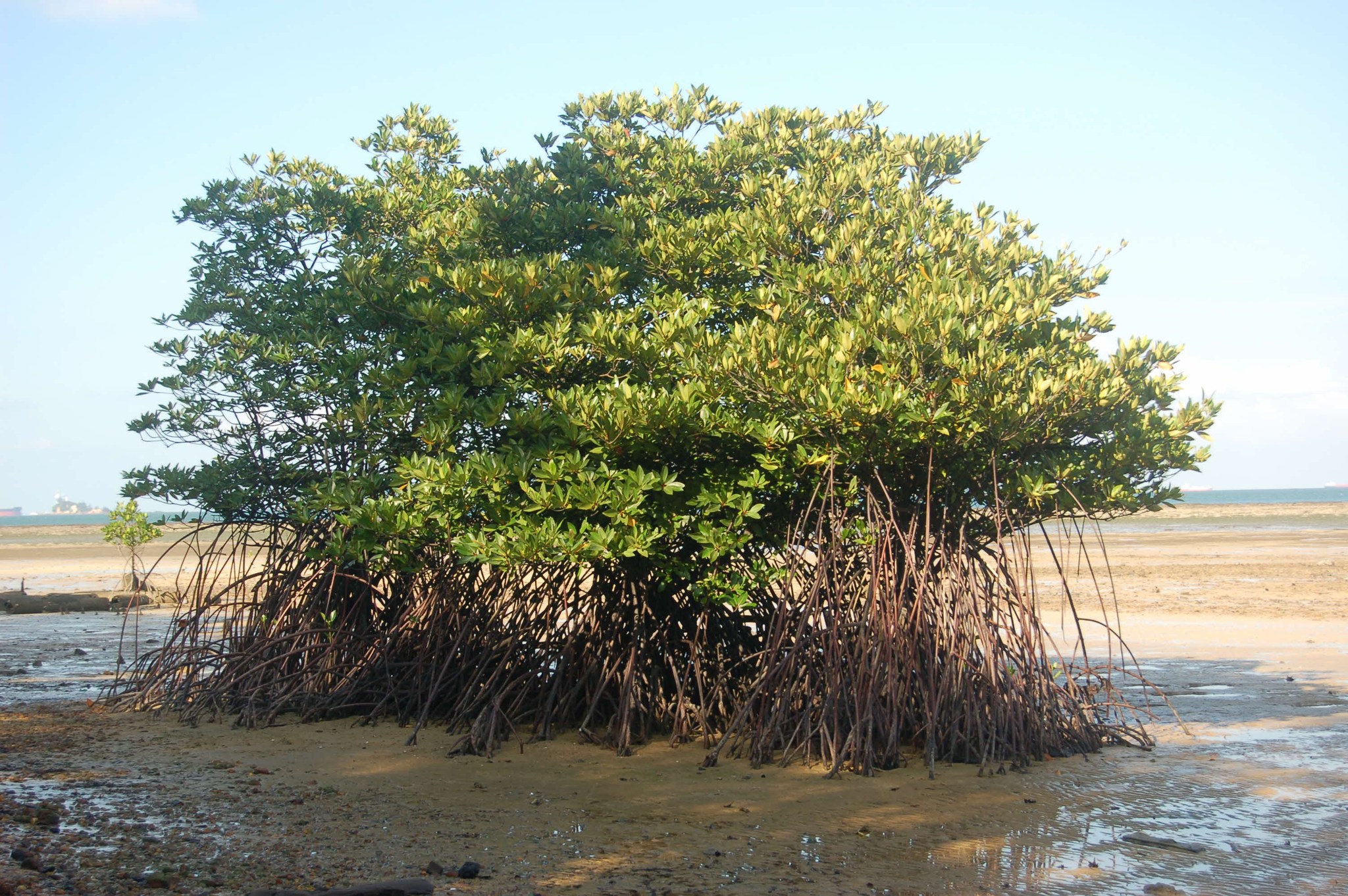 A mangrove tree of the Bakau Minyak (Rhizophora apiculata) species. Image via NParks/Facebook.
A mangrove tree of the Bakau Minyak (Rhizophora apiculata) species. Image via NParks/Facebook.
New recreation spot
Following the restoration works, public access to the park will be improved to provide "additional recreational opportunities" for Singaporeans.
Members of the public will also be invited to join the efforts to plant an additional 1,000 trees along Ubin's coastline when appropriate, the organisations said.
OCBC staff volunteers will also engage the bank's charity partners to visit the park after it is officially opened, OCBC shared.
Nature-based solutions to climate change
The OCBC Mangrove Park project was launched by Minister for National Development Desmond Lee, OCBC Group CEO Helen Wong, Chairman of Garden City Fund Leo Tan and CEO of NParks Kenneth Er on Oct. 29.
They were also joined by representatives from OCBC, NParks, Garden City Fund and RUM.
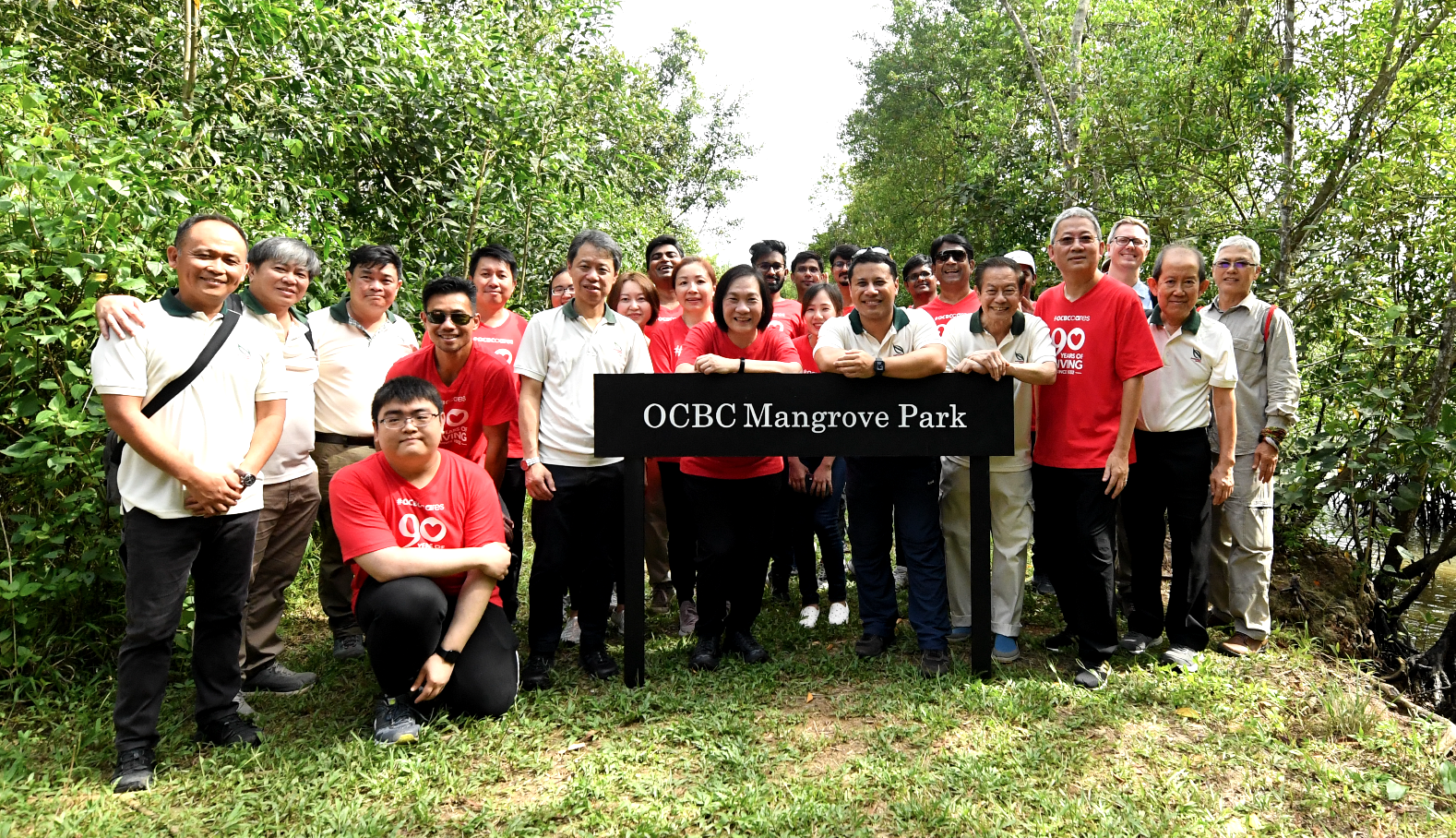 Image via OCBC.
Image via OCBC.
Three mangrove trees were planted to mark the launch of the park.
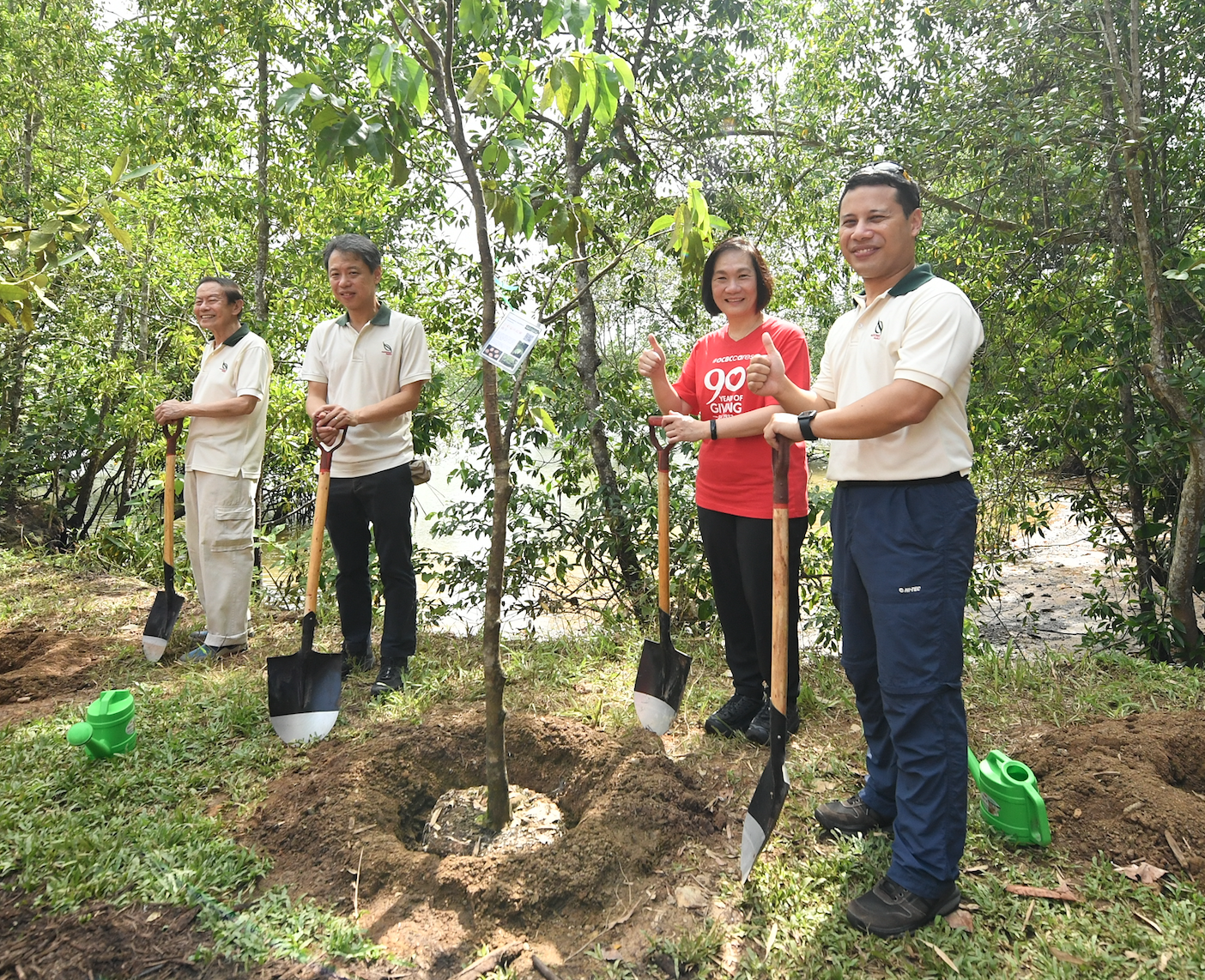 Image via OCBC.
Image via OCBC.
Lee thanked OCBC for their continued partnership "in our efforts to transform Singapore into a City in Nature".
He noted that the mangrove project "complements" other nature-based solutions implemented by NParks.
"These solutions are important in mitigating climate change and offer additional habitats for our native biodiversity", Lee said.
The OCBC Mangrove Project is one of two mangrove restoration projects to be funded by the bank, the other of which is in Malaysia.
"Dealing with carbon emissions is key in fighting climate change. That’s why OCBC has been supporting reforestation and restoration projects in the region, which help store carbon", Wong commented.
Top images via Google Maps and Zheng ZhangxinIf you like what you read, follow us on Facebook, Instagram, Twitter and Telegram to get the latest updates.
